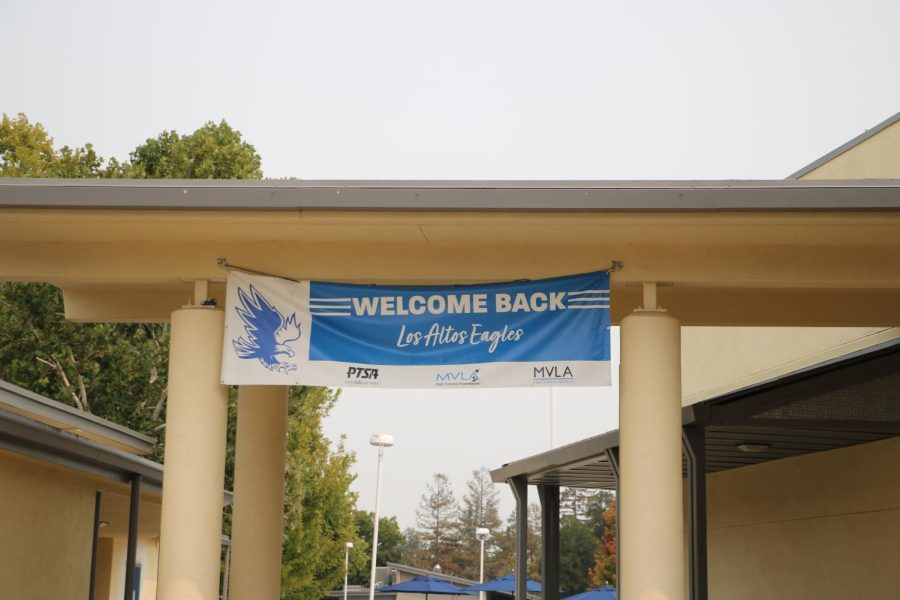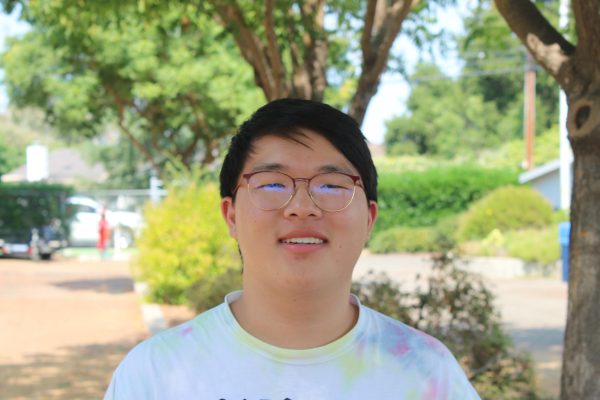Option B: Truly independent learning, at a price
After Los Altos High School returned to in-person learning, some students chose to stay online with Option B, an asynchronous and independent learning avenue.
Most students wanted to escape online school. Scheduled Zoom meetings, awkward breakout room interactions and online exams were temporary pandemic-era solutions they wanted to return from as fast as possible. Some, though, made the decision to remain online, even as the majority of the student body transitioned back into in-person learning this school year. Those students participated in the Mountain View–Los Altos School District’s Option B program, gaining individualized freedom at the cost of social and educational sacrifice.
Option B is an opt-in independent study program built around a fully-online model, established during the 2020–2021 school year to accommodate students’ health concerns and scheduling difficulties. While Option B students are still formally enrolled in their parent school and free to participate in graduation ceremonies and extracurriculars, their schooling experience differs from that of the average student.
Option B students, who use online programs like Edgenuity and Scout from University of California (also known as UC Scout,) spend their time working on coursework through a fully asynchronous model. Due dates are more akin to suggestions than requirements, and students work independently on their assignments with minimal supervision.
“Taking school virtually gave me the opportunity to go at my own pace which I really enjoyed,” sophomore Isaac Lara said. “I decided to come back to Option B because having responsibility over my learning makes me feel accomplished.”
The freedom of Option B’s unstructured learning environment allows students to have a more relaxed schedule. Many Option B students reported significantly more free time and flexibility: Senior Seth Hondl went on runs before starting school and worked on other commitments in his free time, and others spent therapeutic time with friends and family.
“During my free time, I really take the time to relax and reconnect with my surroundings,” senior Matthew Quintana said.
However, such flexibility may come with downsides.
“If you can’t stick to a schedule, it can get very bad very fast,” Seth said. “If you miss a week of school or you decide not to participate in a week of school, you’re now down by a week. It’s not only that, you have to make that week up. You now actually have to do two weeks worth of work in one week, which can get tough.”
“It’s only stressful if you let work pile up,” junior Diego Gonzales said. “It’s less stressful than real school because I don’t need to worry about waking up early to go to school. I can sleep in, workout, go out and do anything I want, but I just need to manage my time right.”
Most students reported spending anywhere between three and four hours daily on school. Most of this time is spent on the Edgenuity and UC Scout platforms, both of which provide pre-recorded lessons, assignments and tests. The students we interviewed found the quality of education to be adequate but lacking in comparison to in-person classes.
“The program is very educational, but it does not go into full detail,” Diego said. “I would have some questions where I would have to look online to educate myself more about the topic.”
Option B courses are also rarely collaborative. Work is done independently, leading to, at most, sparse interactions with teachers and peers.
“It was me sitting in my room working through the program,” Seth said. “A big part of high school is getting to make connections with people inside of your classroom and feeling like you’re a part of the community. And I didn’t really have that.”
Option B students’ only school-related face-to-face interactions are with mentors from the Mountain View–Los Altos School District. Zoom meetings with mentors are scheduled weekly, where students and mentors discuss class load, grades and any other potential problems. Seth was able to resolve technological issues and coursework difficulties with his mentor. Other students had similar positive experiences.
“My mentor is extremely supportive, helpful and kind,” Diego said. “She truly cares about students being successful.”
To compensate for the lack of interaction with teachers and students, many participants looked to their parent school’s events and programs for support. For example, some made the decision to play sports, using activities as an opportunity to connect with others.
“I joined track, which somewhat compensated for the lack of personal interaction,” Diego said. “There was no other way I could stay connected with friends besides online.”
One upside to Option B’s unrestrained schedule and alternate programming is that students can engage in unique hobbies and new educational opportunities. Seth was able to take AP Music Theory, a class not traditionally offered at Los Altos High School, and introduce himself to mechanical engineering. However, some students also suffered because many in-school programs are off-limits for Option B students. As a result, Diego had to forgo Advancement Via Individual Determination (AVID) while Seth moved from LAHS’s marching band to private lessons.
Missed in-person programs, scant peer and teacher interactions and technological hitches make Option B a considerable sacrifice for students — but, for many, a justified one and a rare opportunity for true flexibility.
“I think a lot of students could benefit if they knew about Option B and felt comfortable with the freedom it gives them,” Seth said. “I could have gone to Europe for a month and still done everything I did in Option B. It just gives you the freedom to do what you want to do without being hemmed in by school.”
As the majority of students power through in-person education, working within the restrictions and reaping the benefits of synchronous learning, Option B students face something entirely different — a program just as socially isolating as it is personally freeing.





